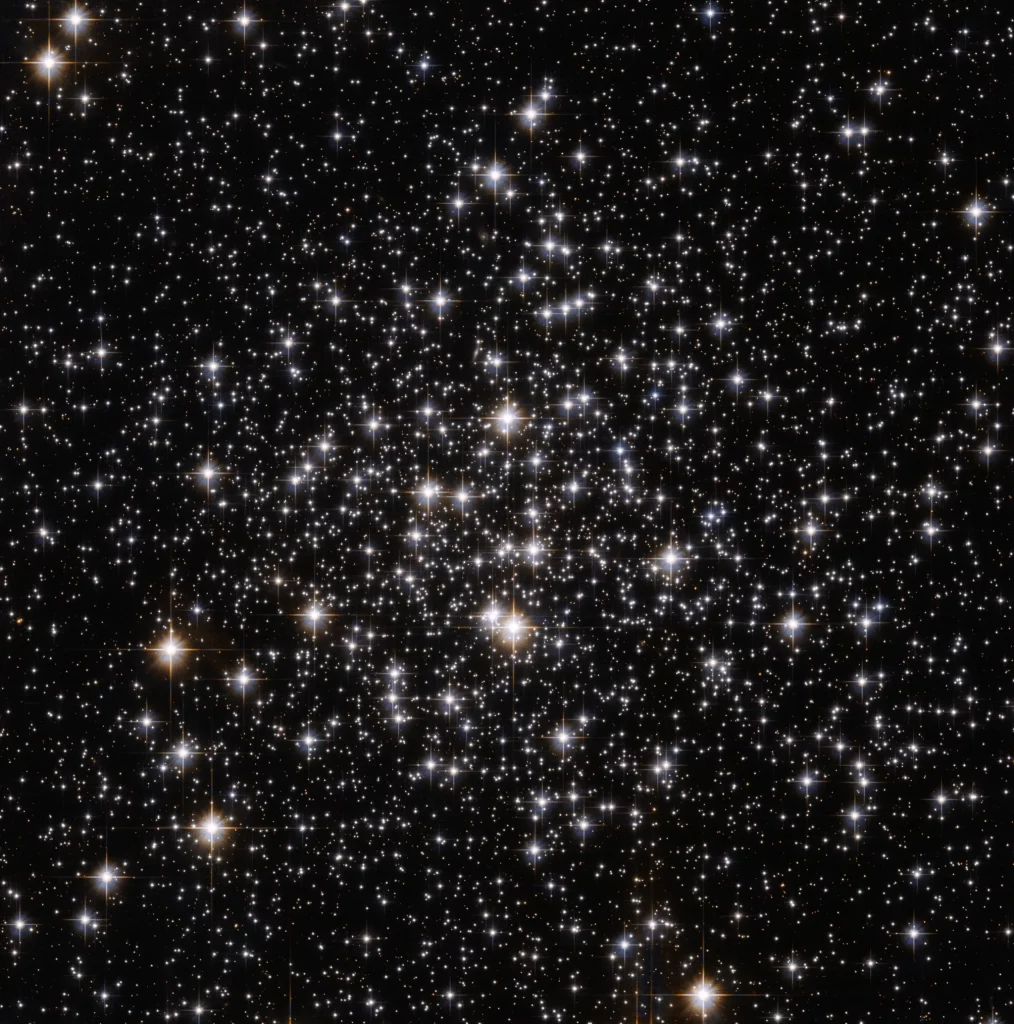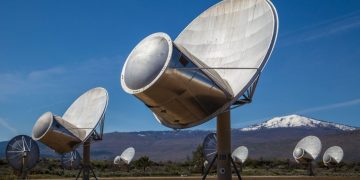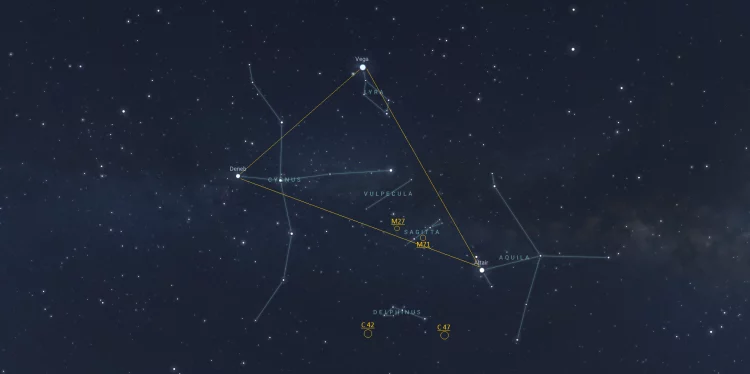Introduction
As the warm nights of summer unfold, stargazers are greeted by one of the most recognizable and striking patterns in the night sky: the Summer Triangle. This prominent asterism, visible across the Northern Hemisphere, serves as a gateway to a rich tapestry of celestial wonders. Comprising three brilliant stars—Vega, Altair, and Deneb—the Summer Triangle not only guides observers to its luminous members but also to a multitude of hidden treasures in its vicinity. This article delves into the intricacies of the Summer Triangle, exploring its constituent stars, associated deep-sky objects, and the broader significance of this stellar formation in the realm of astronomy.
Understanding the Summer Triangle
The Summer Triangle is a seasonal asterism, or a pattern of stars, that is prominently visible in the summer sky of the Northern Hemisphere. It is formed by the three bright stars Vega, Altair, and Deneb, which are the alpha stars of their respective constellations: Lyra, Aquila, and Cygnus. This asterism is not a formal constellation but rather a notable grouping of stars that span the summer months.
The Stars of the Summer Triangle
1. Vega (Lyra)
- Characteristics: Vega, the brightest star in the Summer Triangle, is the primary star in the constellation Lyra. It is an A-type main-sequence star, approximately 25 light-years away from Earth. Vega has a blue-white hue and shines with a magnitude of 0.03, making it one of the most luminous stars visible from Earth.
- Significance: Vega has been an important reference point for astronomers due to its brightness and proximity. It was the northern pole star around 12,000 BCE and will be again in about 13,000 years. Vega is also known for its debris disk, which suggests the presence of a planetary system.
2. Altair (Aquila)
- Characteristics: Altair is the brightest star in the constellation Aquila and the second brightest in the Summer Triangle. It is a rapid rotator, with a rotation period of about 9 hours, which causes it to be an oblate spheroid. Altair is a spectral type A7V star located approximately 16.7 light-years away from Earth.
- Significance: Altair’s rapid rotation has made it a subject of interest in the study of stellar physics and rotation. Its proximity and brightness make it a valuable star for various astronomical observations.
3. Deneb (Cygnus)
- Characteristics: Deneb, the third star of the Summer Triangle, is the brightest star in the constellation Cygnus. It is a supergiant star with a spectral type of A2Iae, located about 2,600 light-years from Earth. Deneb shines with a magnitude of 1.25, giving it a distinctly bright appearance.
- Significance: Deneb is one of the most distant stars visible to the naked eye. Its classification as a supergiant and its vast distance make it an intriguing object for studying stellar evolution and the life cycles of massive stars.
Exploring the Hidden Treasures
Beyond the prominent stars of the Summer Triangle lies a treasure trove of astronomical objects and phenomena. This section explores some of the most fascinating deep-sky objects located within or near the Summer Triangle.
1. The Ring Nebula (M57)
- Location: Situated in the constellation Lyra, the Ring Nebula is located roughly halfway between Vega and the star Sheliak (Beta Lyrae).
- Characteristics: The Ring Nebula is a classic example of a planetary nebula—a cloud of ionized gas expelled by a dying star. Its appearance resembles a ring or donut, with a central, glowing core surrounded by a faint halo of gas. It was discovered by astronomer Antoine Darquier de Pellepoix in 1779 and later cataloged by Charles Messier.
- Significance: Studying the Ring Nebula provides insights into the end stages of stellar evolution for stars of intermediate mass. The nebula’s complex structure and the interaction of its gases offer valuable information about the processes involved in nebula formation and stellar death.
2. The Dumbbell Nebula (M27)
- Location: Positioned in the constellation Vulpecula, the Dumbbell Nebula is near the boundary with Cygnus, not far from Deneb.
- Characteristics: The Dumbbell Nebula is another planetary nebula, notable for its hourglass or dumbbell-shaped appearance. Discovered by Charles Messier in 1764, it is one of the brightest and closest planetary nebulae to Earth, located approximately 1,360 light-years away.
- Significance: The Dumbbell Nebula’s relatively close distance allows astronomers to study its structure and composition in detail. Observations of this nebula contribute to our understanding of the dynamics of gas ejected from dying stars and the subsequent formation of planetary nebulae.
3. The Veil Nebula
- Location: The Veil Nebula is a large, diffuse nebula in the constellation Cygnus, near the central region of the Summer Triangle.
- Characteristics: The Veil Nebula is the remnant of a supernova explosion that occurred about 8,000 years ago. It is a prominent example of a supernova remnant, showcasing intricate filaments of ionized gas and dust. The nebula is often divided into several parts, including the Eastern Veil (NGC 6960) and the Western Veil (NGC 6992).
- Significance: The Veil Nebula offers a stunning visual representation of the aftermath of a stellar explosion. Studying the Veil provides insights into the processes of supernovae, the dispersal of stellar material, and the formation of new cosmic structures from the remnants of explosive stellar events.
4. The North America Nebula (NGC 7000)
- Location: Found in the constellation Cygnus, the North America Nebula is situated close to Deneb and the central region of the Summer Triangle.
- Characteristics: The North America Nebula is a large emission nebula resembling the shape of the North American continent. It is a region of intense star formation, illuminated by the ultraviolet radiation from young, hot stars. The nebula is approximately 1,500 light-years away and spans about 100 light-years across.
- Significance: Observing the North America Nebula provides valuable information about the processes of star formation and the interactions between young stars and their surrounding gas and dust. The nebula’s distinctive shape and brightness make it a fascinating object for both amateur and professional astronomers.
5. The Cocoon Nebula (NGC 2264)
- Location: The Cocoon Nebula is located in the constellation Monoceros, which lies near the edge of the Summer Triangle.
- Characteristics: The Cocoon Nebula is an emission nebula known for its dense, dark dust clouds and regions of active star formation. It is home to several young, massive stars that illuminate and shape the surrounding gas and dust. The nebula is approximately 2,500 light-years away from Earth.
- Significance: The Cocoon Nebula is an important site for studying the formation and evolution of stars within dense molecular clouds. Observations of this nebula contribute to our understanding of stellar birth processes and the impact of young stars on their surrounding environment.
6. The Star Cluster NGC 6914
- Location: Situated in the constellation Cygnus, the star cluster NGC 6914 is located near the central region of the Summer Triangle.
- Characteristics: NGC 6914 is an open star cluster associated with a complex region of star formation. It contains a number of young, massive stars and is embedded within a nebula that contributes to its overall luminosity. The cluster is located approximately 11,000 light-years from Earth.
- Significance: Studying NGC 6914 provides insights into the processes of star formation and the structure of star clusters within nebular regions. The cluster’s location within a star-forming nebula makes it a valuable object for understanding the interactions between young stars and their environment.
Navigating the Summer Triangle
1. Identifying the Asterism
The Summer Triangle is easily identifiable by its three bright stars, which form a prominent triangular shape in the night sky. To locate the Summer Triangle:
- Find Vega: Vega is the first star to appear in the Summer Triangle and is located high in the eastern sky during summer evenings.
- Locate Altair: Altair is situated to the southeast of Vega, forming one corner of the triangle.
- Spot Deneb: Deneb is found to the northwest of Vega, completing the triangular formation.
2. Exploring the Nearby Constellations
The Summer Triangle is surrounded by several notable constellations:
- Lyra: The constellation Lyra is home to Vega and is a small, distinctive constellation shaped like a lyre or harp. It contains several interesting deep-sky objects, including the Ring Nebula.
- Aquila: Aquila, the constellation where Altair resides, represents an eagle. It is associated with various astronomical phenomena and deep-sky objects, including the star cluster NGC 6709.
- Cygnus: Cygnus, the constellation associated with Deneb, is known as the Swan. It features numerous stars and nebulae, including the Veil Nebula and the North America Nebula.
**3. Observing
The Summer Triangle’s Hidden Treasures: An In-Depth Exploration of a Celestial Gem
Introduction
As the warm nights of summer unfold, stargazers are greeted by one of the most recognizable and striking patterns in the night sky: the Summer Triangle. This prominent asterism, visible across the Northern Hemisphere, serves as a gateway to a rich tapestry of celestial wonders. Comprising three brilliant stars—Vega, Altair, and Deneb—the Summer Triangle not only guides observers to its luminous members but also to a multitude of hidden treasures in its vicinity. This article delves into the intricacies of the Summer Triangle, exploring its constituent stars, associated deep-sky objects, and the broader significance of this stellar formation in the realm of astronomy.
Understanding the Summer Triangle
The Summer Triangle is a seasonal asterism, or a pattern of stars, that is prominently visible in the summer sky of the Northern Hemisphere. It is formed by the three bright stars Vega, Altair, and Deneb, which are the alpha stars of their respective constellations: Lyra, Aquila, and Cygnus. This asterism is not a formal constellation but rather a notable grouping of stars that span the summer months.
The Stars of the Summer Triangle
1. Vega (Lyra)
- Characteristics: Vega, the brightest star in the Summer Triangle, is the primary star in the constellation Lyra. It is an A-type main-sequence star, approximately 25 light-years away from Earth. Vega has a blue-white hue and shines with a magnitude of 0.03, making it one of the most luminous stars visible from Earth.
- Significance: Vega has been an important reference point for astronomers due to its brightness and proximity. It was the northern pole star around 12,000 BCE and will be again in about 13,000 years. Vega is also known for its debris disk, which suggests the presence of a planetary system.
2. Altair (Aquila)
- Characteristics: Altair is the brightest star in the constellation Aquila and the second brightest in the Summer Triangle. It is a rapid rotator, with a rotation period of about 9 hours, which causes it to be an oblate spheroid. Altair is a spectral type A7V star located approximately 16.7 light-years away from Earth.
- Significance: Altair’s rapid rotation has made it a subject of interest in the study of stellar physics and rotation. Its proximity and brightness make it a valuable star for various astronomical observations.
3. Deneb (Cygnus)
- Characteristics: Deneb, the third star of the Summer Triangle, is the brightest star in the constellation Cygnus. It is a supergiant star with a spectral type of A2Iae, located about 2,600 light-years from Earth. Deneb shines with a magnitude of 1.25, giving it a distinctly bright appearance.
- Significance: Deneb is one of the most distant stars visible to the naked eye. Its classification as a supergiant and its vast distance make it an intriguing object for studying stellar evolution and the life cycles of massive stars.
Exploring the Hidden Treasures
Beyond the prominent stars of the Summer Triangle lies a treasure trove of astronomical objects and phenomena. This section explores some of the most fascinating deep-sky objects located within or near the Summer Triangle.
1. The Ring Nebula (M57)
- Location: Situated in the constellation Lyra, the Ring Nebula is located roughly halfway between Vega and the star Sheliak (Beta Lyrae).
- Characteristics: The Ring Nebula is a classic example of a planetary nebula—a cloud of ionized gas expelled by a dying star. Its appearance resembles a ring or donut, with a central, glowing core surrounded by a faint halo of gas. It was discovered by astronomer Antoine Darquier de Pellepoix in 1779 and later cataloged by Charles Messier.
- Significance: Studying the Ring Nebula provides insights into the end stages of stellar evolution for stars of intermediate mass. The nebula’s complex structure and the interaction of its gases offer valuable information about the processes involved in nebula formation and stellar death.
2. The Dumbbell Nebula (M27)
- Location: Positioned in the constellation Vulpecula, the Dumbbell Nebula is near the boundary with Cygnus, not far from Deneb.
- Characteristics: The Dumbbell Nebula is another planetary nebula, notable for its hourglass or dumbbell-shaped appearance. Discovered by Charles Messier in 1764, it is one of the brightest and closest planetary nebulae to Earth, located approximately 1,360 light-years away.
- Significance: The Dumbbell Nebula’s relatively close distance allows astronomers to study its structure and composition in detail. Observations of this nebula contribute to our understanding of the dynamics of gas ejected from dying stars and the subsequent formation of planetary nebulae.
3. The Veil Nebula
- Location: The Veil Nebula is a large, diffuse nebula in the constellation Cygnus, near the central region of the Summer Triangle.
- Characteristics: The Veil Nebula is the remnant of a supernova explosion that occurred about 8,000 years ago. It is a prominent example of a supernova remnant, showcasing intricate filaments of ionized gas and dust. The nebula is often divided into several parts, including the Eastern Veil (NGC 6960) and the Western Veil (NGC 6992).
- Significance: The Veil Nebula offers a stunning visual representation of the aftermath of a stellar explosion. Studying the Veil provides insights into the processes of supernovae, the dispersal of stellar material, and the formation of new cosmic structures from the remnants of explosive stellar events.
4. The North America Nebula (NGC 7000)
- Location: Found in the constellation Cygnus, the North America Nebula is situated close to Deneb and the central region of the Summer Triangle.
- Characteristics: The North America Nebula is a large emission nebula resembling the shape of the North American continent. It is a region of intense star formation, illuminated by the ultraviolet radiation from young, hot stars. The nebula is approximately 1,500 light-years away and spans about 100 light-years across.
- Significance: Observing the North America Nebula provides valuable information about the processes of star formation and the interactions between young stars and their surrounding gas and dust. The nebula’s distinctive shape and brightness make it a fascinating object for both amateur and professional astronomers.

5. The Cocoon Nebula (NGC 2264)
- Location: The Cocoon Nebula is located in the constellation Monoceros, which lies near the edge of the Summer Triangle.
- Characteristics: The Cocoon Nebula is an emission nebula known for its dense, dark dust clouds and regions of active star formation. It is home to several young, massive stars that illuminate and shape the surrounding gas and dust. The nebula is approximately 2,500 light-years away from Earth.
- Significance: The Cocoon Nebula is an important site for studying the formation and evolution of stars within dense molecular clouds. Observations of this nebula contribute to our understanding of stellar birth processes and the impact of young stars on their surrounding environment.
6. The Star Cluster NGC 6914
- Location: Situated in the constellation Cygnus, the star cluster NGC 6914 is located near the central region of the Summer Triangle.
- Characteristics: NGC 6914 is an open star cluster associated with a complex region of star formation. It contains a number of young, massive stars and is embedded within a nebula that contributes to its overall luminosity. The cluster is located approximately 11,000 light-years from Earth.
- Significance: Studying NGC 6914 provides insights into the processes of star formation and the structure of star clusters within nebular regions. The cluster’s location within a star-forming nebula makes it a valuable object for understanding the interactions between young stars and their environment.
Navigating the Summer Triangle
1. Identifying the Asterism
The Summer Triangle is easily identifiable by its three bright stars, which form a prominent triangular shape in the night sky. To locate the Summer Triangle:
- Find Vega: Vega is the first star to appear in the Summer Triangle and is located high in the eastern sky during summer evenings.
- Locate Altair: Altair is situated to the southeast of Vega, forming one corner of the triangle.
- Spot Deneb: Deneb is found to the northwest of Vega, completing the triangular formation.
2. Exploring the Nearby Constellations
The Summer Triangle is surrounded by several notable constellations:
- Lyra: The constellation Lyra is home to Vega and is a small, distinctive constellation shaped like a lyre or harp. It contains several interesting deep-sky objects, including the Ring Nebula.
- Aquila: Aquila, the constellation where Altair resides, represents an eagle. It is associated with various astronomical phenomena and deep-sky objects, including the star cluster NGC 6709.
- Cygnus: Cygnus, the constellation associated with Deneb, is known as the Swan. It features numerous stars and nebulae, including the Veil Nebula and the North America Nebula.


















































Discussion about this post